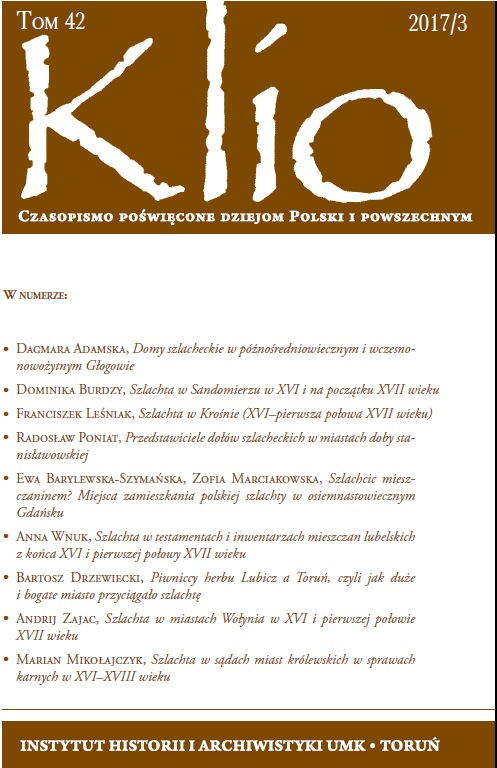Domy szlacheckie UJ późnośredniowiecznym i wczesnonowożytnym Głogowie
Houses of the nobility in the late-medieval and early modem Głogom
Author(s): Dagmara AdamskaSubject(s): Local History / Microhistory, 15th Century, 16th Century
Published by: Wydawnictwo Naukowe Uniwersytetu Mikołaja Kopernika
Keywords: nobility houses of the nobility; Głogów; Silesia;
Summary/Abstract: The article deals with the presence of the nobility in Głogów (Silesia) in the 15th and 16th centuries. It aims at indicating the number of houses, their locations, as well as reconstructing the fate of the objects, in order to bring closer the reasons for keeping up properties by the gentry in Głogów. Three clusters of manor houses were indicated. Most of the houses were on the “castle fief” (Burglehri), in the neighborhood of city walls and the castle. Two houses can be located outside the city walls on Ostrów Tumski; and the other two in the neighborhood of the bourgeois properties, but in the prestigious part of the city, including also the bishops parish and monasteries. The public registers of the manor houses are not clear. We find out about them in the middle of the 15th century, during the reign of Cieszyn dukes in Głogów — Włodek and Margaret. Maintaining city property by the nobles in most cases correlates with the performance of their court and clerical functions, but also with the possession of rural estates. Manor houses on the “castle fiefs” could be used for accommodation, but also give the owners the opportunity for the enforcement of interests. In the case of properties on Ostrów Tumski, the hypothesis of a stable presence of noblemen.
Journal: Klio. Czasopismo poświęcone dziejom Polski i powszechnym
- Issue Year: 42/2017
- Issue No: 3
- Page Range: 7-30
- Page Count: 24
- Language: Polish

